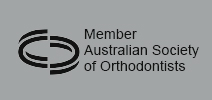Auxiliary: at MOG our auxiliary dental practitioners are qualified Dental Hygienists and Dental Therapists and are trained to work under the instruction of your orthodontist.
Bone age study: measures the “growing zones” at both ends of the fingers and wrist called growth plates. The bones on the X-ray image are compared with X-rays images in a standard atlas of bone development, which is based on data from large numbers of other children of the same gender and age. This can help evaluate how fast or slowly a child’s skeleton is maturing, which can help the orthodontist predict the best time to start a particular treatment plan.
Eruption: a tooth is said to erupt when it breaks through the surface of your gums, so you can see it in your mouth. Conversely, an unerupted tooth remains below the gum.
Exposure: unerupted teeth that become impacted (or stuck) usually requiring surgical exposure to help them erupt.
Extraction: removal of teeth to help reduce crowding or removal of wisdom teeth that may be impacted.
Impacted teeth: occurs when the teeth either become stuck under the gum or are only able to partially break through the gum.
Lat Ceph x-ray: is a Lateral Cephalometry x-ray that displays the entire side of the head. It is used to obtain precise measurements of the face, and to look at your teeth in relation to the jaw and your overall side profile. This shows us how the upper and lower jaws relate to each other and how they may grow and respond during orthodontic treatment.
Malocclusion: imperfect positioning of the teeth when the jaws are closed. Also known as “bad bite”
- Class I Malocclusion – A condition where the bite is correct, but teeth are crooked, crowded or turned
- Class II Malocclusion – A condition where upper teeth stick out past your lower teeth. This is also called “overbite” or “buck teeth”
- Class III Malocclusion – A condition where lower teeth stick out past the upper teeth. Also called an “underbite”
Maxillofacial surgeon: a specialist surgeon treating the entire ‘craniomaxillofacial complex’ or the anatomical area of the mouth, jaws, face, skull, as well as associated structures.
OPG x-ray: this stands for Orthopantomogram and it shows upper and lower teeth as a single image in a long flat line. This single image shows the number, position and growth rate of all of your teeth, including those that have not yet surfaced.
Periodontist: A dentist who specializes in the treatment of diseases of gums.
TADs: Temporary anchorage devices, tiny titanium screws inserted into jaw bone. They allow orthodontists to achieve movement in a much faster time and with less discomfort and patient compliance than ever before. In some cases surgery can be avoided through the use of TADs.


